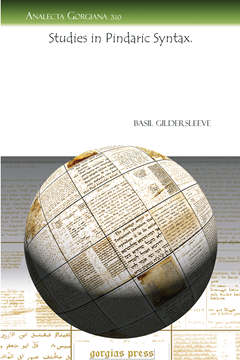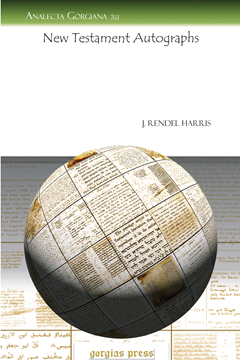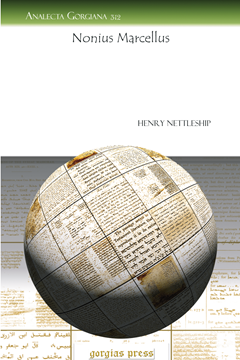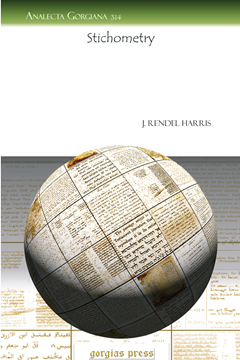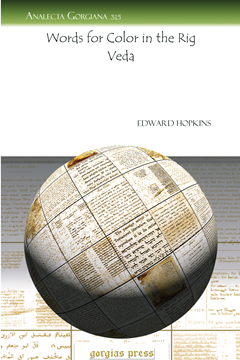On the Enclitic ne in Early Latin
Series: Analecta Gorgiana 309
ISBN: 978-1-60724-541-4
Minton Warren, a distinguished scholar of Roman comedy, explores the origins and shades of meaning in the Latin particle 'ne', arguing that it has both emphatic and interrogative meaning.
$37.00 (USD)
Studies in Pindaric Syntax.
Series: Analecta Gorgiana 310
ISBN: 978-1-60724-542-1
Basil Gildersleeve, a prolific scholar of Greek and Latin grammar, here analyzes the difficult syntax of Pindar, paying particular attention to dependent clauses and conditional statements.
$36.00 (USD)
New Testament Autographs
Series: Analecta Gorgiana 311
ISBN: 978-1-60724-543-8
James Rendel Harris uses known statistics of ancient autographs (that is, the original version of a written document) to posit the general appearance of the epistles in their original form.
$44.00 (USD)
Nonius Marcellus
Series: Analecta Gorgiana 312
ISBN: 978-1-60724-544-5
Nettleship's introduction and commentary to Nonius Marcellus, a 3rd century AD writer on Latin grammar and lexicography. This includes a lengthy biography and background on the work and its influence.
$39.00 (USD)
On the Final Sentence in Greek
Series: Analecta Gorgiana 313
ISBN: 978-1-60724-545-2
Basil Gildersleeve, a prolific scholar of Greek and Latin grammar, here analyzes the development of the final clause in Ancient Greek from Homer to the Athenian dramatists.
$36.00 (USD)
Stichometry
Series: Analecta Gorgiana 314
ISBN: 978-1-60724-546-9
James Rendel Harris uses known statistics of ancient autographs (that is, the original version of a written document) to posit the general appearance of ancient documents in their original form.
$41.00 (USD)
Words for Color in the Rig Veda
Series: Analecta Gorgiana 315
ISBN: 978-1-60724-547-6
Edward Hopkins here addresses and debunks the color theory, which assumes that ancient peoples were unable to perceive shades of green and blue because they lack vocabulary parallel to our own words for color.
$35.00 (USD)
Greek and Latin Inscriptions from Palestine
Series: Analecta Gorgiana 316
ISBN: 978-1-60724-548-3
Allen offers a series of inscriptions from Palestine copied by the Rev. Dr. Selah Merrill in the years I875-77, in the course of journeys undertaken under the auspices of the American Palestine Exploration Society.
$36.00 (USD)
The Reduction of ei to i in Homer
Series: Analecta Gorgiana 317
ISBN: 978-1-60724-549-0
Herbert Weir Smyth focuses on a grammatical feature of the Homeric dialect of Greek viewed as an aberration by other grammarians, namely what seems to be a reduction of the -ei diphthong to -i in certain words.
$37.00 (USD)
On the So-Called Genitive Absolute and Its Use Especially in the Attic Orators
Series: Analecta Gorgiana 318
ISBN: 978-1-60724-550-6
Edward H. Spieker provides a linguistic analysis of the genitive absolute, one of the key constructions of the Greek language and often compared to the Latin Ablative Absolute despite some key dissimilarities.
$37.00 (USD)

